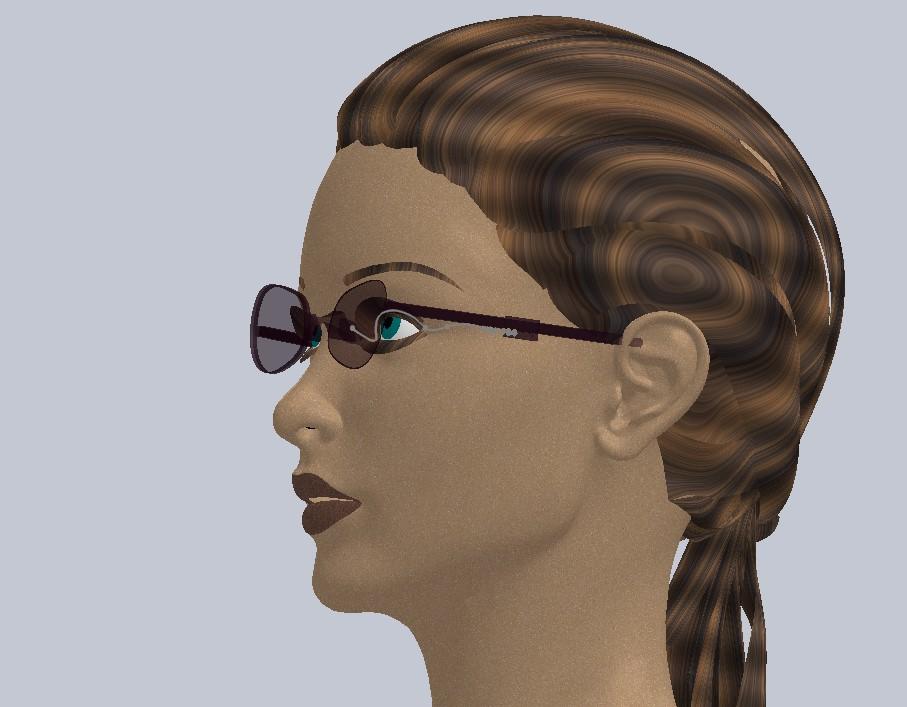Background
Bell’s palsy, involving paralysis of any structures innervated by the facial nerve, is a debilitating condition affecting over 1 million people new patients per year worldwide, with over 40'000 per year in the US. The key function of the facial nerve is eyelid closure, which protects and lubricates the eye. A lack of effective lubrication can cause pain and inflammation. Patients describe chronic nerve paralysis, and the resulting inability to close the eyelid and lubricate the eyes, as like "having sandpaper in the eye". In extreme cases, this can result in blindness.

(Illustration from WebMD)
A number of surgical methods have been used to ‘reanimate’ eyelids in facial paralysis (e.g. gold weight implantation, which can . However, they are unable to achieve spontaneous (quick) and synchronous eye closure and do not provide effective lubrication, which is essential for preserving healthy eyesight [1].
This project grew from a project at UNSW/The Sydney Facial Nerve Clinic to develop an implantable artificial blinking device. However, we realised quickly that all current clinical methods of reanimation require invasive surgery [2]. This is undesirable given Bell’s Palsy is a temporary condition – 70% of patients recover without intervention within 3-5 months, during which period surgical intervention is not considered [3]. Commonly used non-surgical methods of closure involve taping the eyelid shut or frequently applying eye-drops. These are obviously not ideal - they are either ineffective or detract significantly from the patient’s quality of life. A more effective and ergonomic solution to manage Bell’s palsy over the short-term is required. This project aims to develop a non-surgical method of eyelid closure using a system of actuators, connected to the lid via soft, compliant patches, to apply some closure force and displacement to the impaired eyelid.
A schematic of the proposed mechanism is shown in Figure 1, below
The device would work by sensing the blink impulse from the healthy hemisphere via surface EMG, and activating an actuator which would transfer force and displacement to the impaired eyelid, dragging or pushing it closed.
Sensing of the blink impulse from the healthy hemisphere of the face has been successfully demonstrated and will not be tested here [4]. However, an appropriate, external, mechanical closure motion has not been developed. Existing or proposed methods of external closure either involve surface based electrical stimulation nerve or (carried out primarily by Frigerio et al. and reported to be uncomfortable even with acute usage as per the Wong-Baker FACES scale) or sticking electromagnets to the eyelid (the weight and comfort of which were not discussed). The current project will focus on developing prototype devices to test mechanisms of closure that replicate the natural, sphincter like mechanical closure motion of the eyelid while minimising on-eyelid weight using soft, compliant patches. This will be approached either using soft slings or pneumatic patches.
This project has the potential to lead to a device which could provide comfort and improve the daily lives of those suffering from a physically and emotionally debilitating condition.
References:
[1] N. Jayashankar, K. P. Morwani, M. J. Shaan, S. R. Bhatia, and K. T. Patil, "Customized gold weight eyelid implantation in paralytic lagophthalmos," J Laryngol Otol, vol. 122, pp. 1088-91, Oct 2008.
[2] T. T. Tollefson and C. W. Senders, "Restoration of eyelid closure in facial paralysis using artificial muscle: preliminary cadaveric analysis," Laryngoscope, vol. 117, pp. 1907-11, Nov 2007.
[3] S. Hasmat, "Exploring the feasibility of creating eye closure using electromagnets and magnets in patients with facial nerve paralysis," Independent Learning Project, Faculty of Medicine & Graduate School of Biomedical Engineering, University of New South Wales, Sydney, 2014.
[4] M. Kurita, A. Takushima, Y. Muraoka, T. Shiraishi, and K. Harii, "Feasibility of bionic reanimation of a paralyzed face: a preliminary study of functional electrical stimulation of a paralyzed facial muscle controlled with the electromyography of the contralateral healthy hemiface," Plast Reconstr Surg, vol. 126, pp. 81e-3e, Aug 2010.